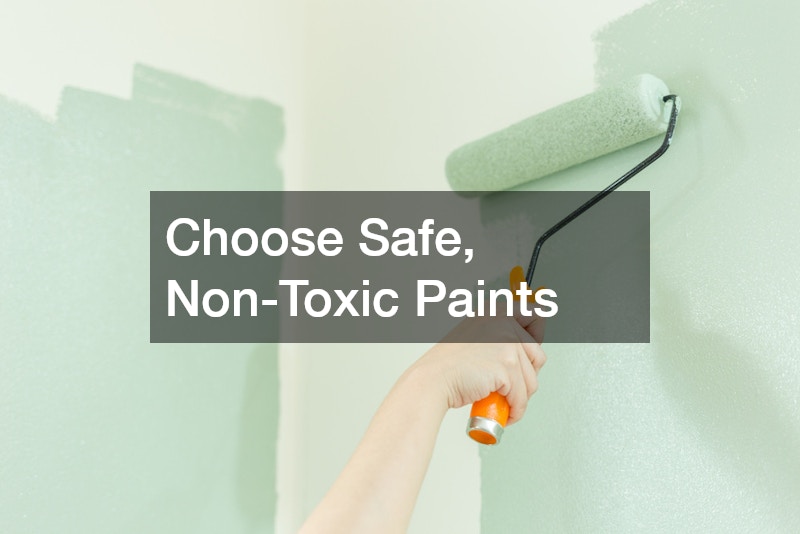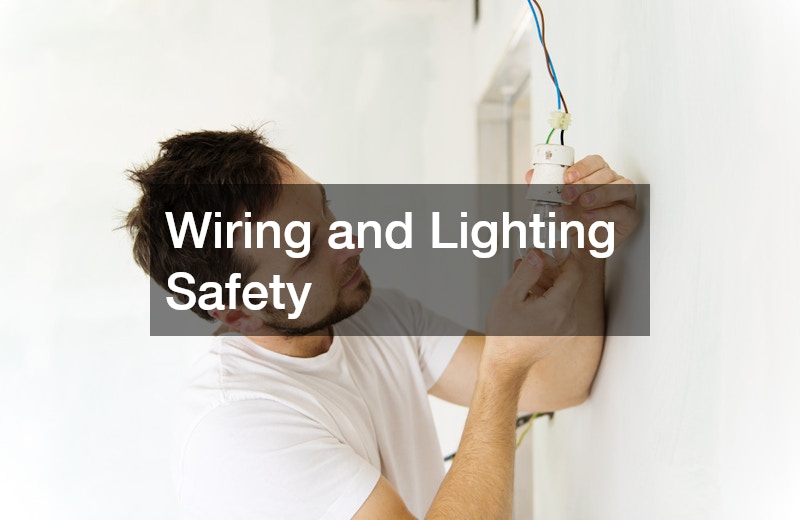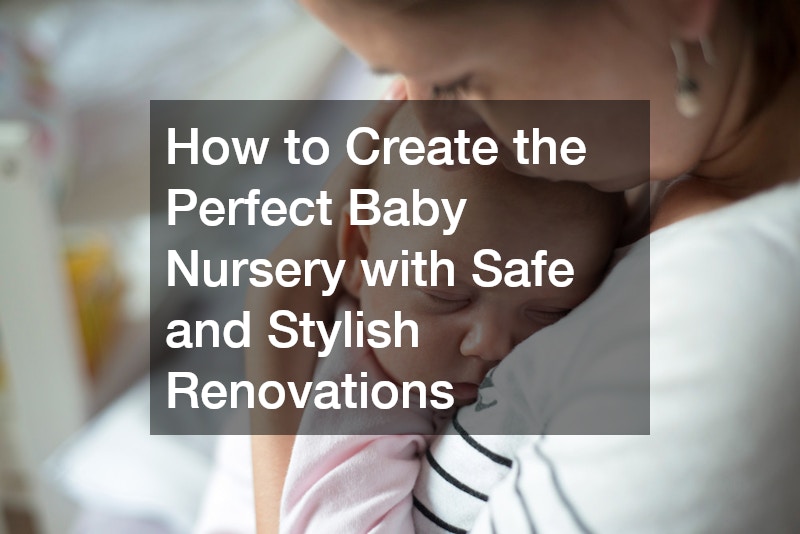Welcoming a new baby into your home is an exciting and life-changing event, and one of the most important preparations you’ll make is baby room renovation. The nursery is a space where your child will sleep, play, and grow, so it needs to be both functional and safe while also being stylish to create a calming and comforting atmosphere. Renovating a nursery involves more than simply choosing cute decor – safety, comfort, and long-term functionality should be at the forefront of your decisions.
In this guide, we’ll walk you through every element of creating the perfect baby nursery, offering specific, actionable advice on baby bedroom furniture, mold prevention, storage solutions, painting, lighting, flooring, and more. Whether you’re transforming an existing room or designing one from scratch, this article provides a step-by-step process to ensure your baby room renovation results in a space that is as safe as it is beautiful.
1. Choose Comfort and Safety
When designing the perfect nursery for your baby, one of the first decisions you’ll make is selecting the right baby bedroom furniture. This is not only an opportunity to create a beautiful space but also to ensure your baby’s safety and comfort. A well-designed nursery should offer a secure environment where your baby feels at ease and where you can care for them efficiently. The foundation of any nursery is the furniture, and choosing high-quality, functional pieces is essential. Each piece of baby bedroom furniture should serve a specific purpose, while also contributing to the overall aesthetic of the room.
The most important and central piece of baby bedroom furniture is the crib. This will be your baby’s primary sleeping area, so it’s crucial to ensure it meets safety guidelines set by experts like the American Academy of Pediatrics (AAP). The AAP recommends that cribs should have slats no more than 2 3/8 inches apart to prevent your baby from slipping through. Additionally, avoid cribs with drop-down sides, as they can pose safety risks and are no longer sold in the U.S. market. The crib should be sturdy, well-constructed, and able to withstand the wear and tear that comes with daily use.
Next, consider the changing table. Since you’ll be changing your baby’s diapers frequently, this piece of baby bedroom furniture should be both functional and comfortable. Look for a changing table that is sturdy and has plenty of storage space to keep diapers, wipes, clothes, and other essentials within easy reach. It’s also important that the changing table has a built-in safety strap to keep your baby secure while you change them. The height of the table is another important factor; choose one that’s at a comfortable height to avoid straining your back during frequent diaper changes.
A glider or rocking chair is another must-have in the nursery. These pieces of furniture are perfect for those late-night feedings or moments when you need to calm your baby. A glider or rocking chair should provide proper back support, as you’ll likely spend a lot of time sitting in it. Choose a chair that’s easy to clean, as spills are inevitable. Some chairs come with padded armrests, which can make nighttime feedings much more comfortable for both you and your baby.
Finally, when selecting baby bedroom furniture, it’s a smart idea to invest in convertible furniture. Convertible cribs can be transformed into toddler beds as your baby grows, extending the life of the furniture. Additionally, many changing tables can double as dressers once your baby no longer needs a changing station. By choosing multi-functional furniture, you can maximize your investment and ensure that your baby’s nursery evolves with their changing needs over time.
2. Ensure a Healthy Environment
Mold is not only an eyesore but can also pose significant health risks, especially for babies, who are more vulnerable to respiratory issues. Babies have developing immune systems and are particularly at risk for complications caused by mold exposure. Mold spores can trigger allergies, worsen asthma, and even lead to infections if not addressed promptly. Before starting any nursery renovation, it is crucial to inspect the space for mold or moisture-related problems, particularly if you live in a humid climate or in a home prone to dampness. Mold often grows in hidden areas, such as under carpets, behind furniture, or within walls, so enlisting the help of mold specialists for a professional inspection is a wise decision.
Hiring licensed mold specialists is an essential step to ensure the thorough and safe removal of any mold in your nursery. These experts have the training and equipment needed to assess the room, identify signs of mold growth, and determine the best course of action. If mold is detected, mold specialists can safely eliminate it using specialized techniques that prevent spores from spreading throughout the home. Given that mold can cause respiratory issues, trigger allergies, and worsen asthma, it is crucial to take proactive measures and address any mold problems early.
To prevent future mold growth, you can take several preventative steps. One key solution is installing a dehumidifier in the nursery to maintain optimal humidity levels, typically between 30% and 50%. Regularly inspecting areas prone to moisture, such as windows, pipes, and bathrooms, is also essential. Sealing any gaps or cracks in the walls or around windows can prevent moisture from entering and creating a favorable environment for mold.
If your baby’s nursery is located in a basement or another damp area, additional steps such as applying mold-resistant paint or installing mold-resistant wallboard can further safeguard against future mold issues. By working with mold specialists and taking these preventive measures, you can ensure a safer, healthier environment for your baby, free from the potential dangers of mold growth.
3. Maximize Storage with Safety in Mind
Babies come with an abundance of gear—clothes, toys, books, diapers, and other essentials—which can quickly lead to clutter if not properly organized. Maximizing storage in your nursery is crucial to keeping everything tidy and accessible. Cabinets are an excellent solution for storing items that are used less frequently, such as extra linens, baby clothes in larger sizes, and seasonal items. They help you keep everything organized while ensuring that the nursery remains neat and calm, which is especially important in a space that should promote relaxation for both the baby and parents.
When selecting cabinets for your nursery, safety should be your top priority. Choose cabinets equipped with child-safe locks to prevent your baby from accessing potentially hazardous items like cleaning supplies, medications, or sharp objects. Soft-close drawers are also a smart option, as they prevent little fingers from getting pinched when the drawer is closed. Additionally, adjustable shelves are highly versatile and allow you to accommodate a variety of items of different sizes, from bottles and baby wipes to larger toys and books as your child grows.
As your baby transitions from an infant to a toddler, their storage needs will evolve. Invest in built-in shelving or customized storage units that can adapt over time. These units can be designed to grow with your child, offering ample space for storing toys, books, and educational materials that will become more prevalent as your baby becomes more active. The flexibility of adjustable shelving or multi-purpose storage units ensures that your nursery remains functional and organized, whether you’re storing baby essentials or toddler playthings. By investing in thoughtful and child-safe storage solutions, you’ll not only keep your nursery clutter-free but also create an environment that supports your baby’s growth and development.
4. Choose Safe, Non-Toxic Paints

A fresh coat of paint can dramatically transform a nursery, brightening the space and setting the tone for a soothing, cozy environment. However, it’s crucial to prioritize safety when selecting paint, as many traditional paints contain volatile organic compounds (VOCs). VOCs are chemicals that can release harmful fumes into the air, potentially causing respiratory problems and other health issues. Babies, with their sensitive developing systems, are especially vulnerable to the effects of these chemicals, making it important to choose non-toxic paint options that won’t compromise their health.
To ensure a safe and healthy environment, opt for low-VOC or Zero VOC paints, which are specifically designed to minimize the release of harmful chemicals. Many well-known paint brands, such as Benjamin Moore and Sherwin-Williams, offer Zero VOC paint options. These paints are certified as safe for children and come in a wide range of colors and finishes, allowing you to create a nursery that is both stylish and safe for your baby. Working with an experienced interior home painter can help ensure that the job is done correctly and efficiently, while also helping you select the best non-toxic paint for the space.
If you find a color you love that’s not available in a Zero VOC formula, you can often request a custom tint in a low-VOC version. Keep in mind, however, that even with low-VOC paints, it’s important to allow the paint to fully dry and ventilate the room before your baby spends time in it. Proper ventilation will help dissipate any residual fumes, ensuring the air quality in the nursery is safe for your little one. By selecting non-toxic paints and allowing adequate drying time, you can create a beautiful, breathable, and healthy nursery for your baby to enjoy.
5. Wiring and Lighting Safety

6. Maintain Cleanliness and Hygiene
The nursery should be a clean and sanitary environment, especially since babies spend a significant amount of time on the floor, whether they’re playing, crawling, or simply lying down. While carpets and rugs provide a soft surface for your little one, they can also harbor dust, dirt, allergens, and germs. As such, maintaining the cleanliness of the nursery’s flooring is essential for your baby’s health and safety. Scheduling a professional carpet cleaning service before moving in the nursery furniture is a smart step. A deep cleaning will help eliminate dust mites, allergens, and bacteria that may have accumulated in the fibers, creating a healthier environment for your baby.
In addition to regular cleaning, using a carpet cleaner can help tackle stains, dirt, and debris that tend to build up in high-traffic areas. For homes with pets, children, or frequent foot traffic, carpet cleaners can remove deeply embedded dirt and keep the nursery looking fresh. It’s also important to regularly vacuum the carpet using a vacuum cleaner with a HEPA filter to trap dust and allergens.
When selecting carpets or rugs for the nursery, consider opting for hypoallergenic options made from natural fibers, such as wool or cotton. These materials are less likely to trigger allergies or asthma compared to synthetic fibers. Low-pile carpets, which have shorter fibers, are particularly beneficial in nurseries. They are easier to clean and maintain, as they don’t trap dust and allergens as much as high-pile options. Choosing hypoallergenic, low-pile carpets can help ensure a cleaner, safer, and more comfortable environment for your baby.
7. Select Safe, Comfortable Flooring
When choosing flooring for the nursery, safety and comfort should be your primary considerations. Babies spend a lot of time on the floor, whether they’re playing, crawling, or learning to walk, so the flooring needs to provide a soft, cushioned surface to minimize the impact of falls, while also being durable enough to withstand the wear and tear of daily use. While carpet can offer a cozy feel, it may not always be the most practical choice, especially if you’re concerned about allergens or cleaning. Hardwood, cork, or vinyl flooring are often more practical alternatives, as they are easier to clean, less likely to trap dirt and allergens, and tend to be more durable over time.
Hiring a flooring contractor can help you make the best decision based on your nursery’s needs. A professional can guide you in selecting the right type of flooring for your space, ensuring that the installation is done safely and correctly. Hardwood floors offer a classic, timeless look, and they are easy to clean and maintain, though they can be cold and hard underfoot. Cork floors, on the other hand, are soft, eco-friendly, and naturally cushioned, making them a great option for a nursery where your baby will spend a lot of time crawling and playing. Vinyl flooring is another practical choice—it’s waterproof, highly durable, and available in a variety of styles and designs.
To add extra comfort and cushioning to these harder flooring options, consider adding a soft area rug or playmat in the nursery. These additions can provide a warm, inviting space for your baby to play and explore, while also offering the protection needed to reduce the risk of injury from falls. By carefully choosing the right flooring and incorporating soft surfaces for extra comfort, you’ll create a safe, stylish, and functional nursery for your baby to grow and thrive in.
8. Control Natural Light and Privacy
Blinds and window treatments are crucial components in creating a comfortable and functional nursery. They offer privacy, regulate natural light, and help create the ideal environment for your baby’s sleep. Controlling the amount of light entering the room is particularly important for establishing healthy sleep patterns. A well-lit room during the day and a dark, peaceful environment at night can support better naps and longer sleep cycles. Cordless blinds are the safest choice for nurseries, as traditional blinds with cords can present a serious strangulation hazard for babies and toddlers. Choosing cordless options ensures peace of mind while maintaining the safety of your child.
Blackout blinds are a particularly beneficial addition to your nursery, as they effectively block out light during naps or nighttime, creating a darker environment that can encourage better sleep. Many babies are sensitive to light, and using blackout blinds can help them sleep longer and more soundly by preventing early morning sunlight or street lights from disturbing their rest. In addition to enhancing your baby’s sleep, blackout blinds also provide extra insulation, keeping the nursery cooler in summer and warmer in winter.
If privacy is a concern—particularly if your nursery is located on a ground floor—ensure that your blinds are thick enough to prevent people from seeing inside. A thick fabric or layered window treatment can block external views and give you the privacy you need without sacrificing style. Combining safety, comfort, and functionality, well-chosen blinds and window treatments can significantly improve the quality of both your baby’s sleep and your peace of mind.
9. Prevent Unwanted Visitors

No one wants pests in the nursery, especially when babies are more sensitive to bites, allergens, and the potential risks associated with infestations. Since babies’ immune systems are still developing, they are particularly vulnerable to insect bites, such as those from mosquitoes or ants, as well as the allergens carried by pests like rodents or cockroaches. To ensure your nursery is a safe space, it’s essential to address any pest issues before setting up the room. Hiring a professional pest control service to inspect and treat the area can help identify potential problems and eliminate them before they become a larger issue. This proactive step can give you peace of mind and create a safer, healthier environment for your baby.
When dealing with pest control, opt for eco-friendly methods to avoid exposing your baby to harsh chemicals. Many pest control services now offer natural or organic solutions that are safe for both babies and pets while effectively keeping pests at bay. These treatments can target common pests like ants, mosquitoes, and rodents without introducing harmful toxins into the nursery.
Additionally, ensure that the nursery is well-sealed from the outside environment to prevent pests from entering the room in the first place. Check that windows and doors are properly closed and sealed, and look for any gaps or cracks around the edges that could provide an entry point for insects or rodents. Using weatherstripping or caulking to seal these areas can further reduce the risk of unwanted guests. By taking these steps, you can create a pest-free nursery that supports a clean, safe, and comfortable environment for your baby.
10. Keep the Space Spotless
Maintaining a clean nursery is crucial for your baby’s health and well-being, as babies are especially vulnerable to germs, dust, and allergens. Before setting up your nursery furniture, consider hiring a professional house cleaning service to deep clean the space. A thorough cleaning will ensure the room is spotless and free of dust, dirt, and germs, creating a healthier environment for your baby. This initial deep cleaning can provide peace of mind knowing that the nursery is safe and hygienic before your baby spends time in the room.
Once your baby arrives, keeping the nursery tidy and hygienic should remain a top priority. Babies are constantly exposed to surfaces, especially when crawling, playing, or being changed, so regular cleaning is essential to reduce the risk of illness. Setting up a regular cleaning schedule will help maintain a fresh and sanitized environment. For added convenience, hiring a cleaning service to handle weekly or monthly cleanings can ensure that the nursery remains spotless without putting extra strain on your schedule.
Focus on high-touch areas, such as changing tables, cribs, and toys, as these are the places that accumulate the most dirt and germs. Ensuring these areas are cleaned frequently will help keep your baby safe and comfortable. A professional cleaning service can also take care of deeper cleaning tasks, like sanitizing soft surfaces and upholstery, that might be more difficult to manage on your own. By maintaining a clean and hygienic nursery, you can create a safe, healthy, and welcoming space for your baby to grow and thrive.
Creating the perfect baby nursery is a rewarding process, but it requires thoughtful planning and attention to detail. By incorporating safety, functionality, and style into each aspect of the renovation, from furniture choices to pest control, you can ensure your baby has a safe, comfortable, and beautiful space to grow and thrive. With the right professionals and thoughtful preparation, you’ll be ready to welcome your little one into their perfect nursery.

